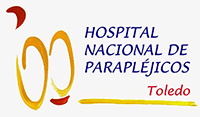- Anti-oxidant/anti-inflamatory nanoparticles to protect the brain from excess electrophysiology and to mitigate damage post-crisis
- Characterization of the didys552 zebrafish mutant line (mutation in snc1lab gene) and set up of an efficacy drug screening assay using reference compounds
- Cell Therapy with GABAergic interneuron precursors for Early Infantil Epileptic Encephalopathies (S. Dravet, S. West y S. Stxbp1)
- Creation of a therapeutic drug monitoring (TDM) unit for the optimization of the Dravet syndrome pharmacological therapy
- Design, synthesis and pharmacological evaluation of new neuroprotective agents oriented to the tratment of Dravet syndrome
- Efecto de campos magnéticos estáticos de intensidad moderada en modelos de epilepsia y síndrome de Dravet
- The effect of beta-caryophyllene treatment in a murine model of Dravet syndrome
- The endocannabinoid system study in Dravet syndrome
- Intrinsic neuronal excitability and spontaneous 1 activity underlie cortical abnormalities upon Nr2f1/COUP-TFI deficiency
- Investigating Epilepsy by Super-resolution Imaging of Synapses and the Extracellular Space in Live Brain Tissue
- Precision Medicine in Dravet Syndrome
- Reactive Neurogenesis and Gliogenesis in a Dravet Syndrome Mouse Model
(Neurocom-Neurofisología experimental)
(Neurocom-Neurofisología experimental)
Non-invasive brain stimulation techniques include a group of different procedures which allow us to interact with neuronal activity to study and treat various neurological and psychiatric diseases. Through the application of low intensity currents or magnetic fields we can modulate the activity of the cerebral cortex which undoubtedly provides new opportunities for treating brain illnesses. For instance, transcranial magnetic stimulation has been approved by the FDA for the treatment of drug resistant depression with an efficacy greater than 50%. Recently the application of static magnetic fields (0.5T) has shown its usefulness to decrease the level of activity of the cerebral cortex, both in humans and in animal models, which could have a clinical application in the future.
Duration: 2 years
Casto Rivadulla
Facultad de Ciencias de la Salud
Campus de Oza. 15006 A Coruña.
T: +34-981167000 ext 5860

Non-invasive brain stimulation techniques include a group of different procedures which allow us to interact with neuronal activity to study and treat various neurological and psychiatric diseases. Through the application of low intensity currents or magnetic fields we can modulate the activity of the cerebral cortex which undoubtedly provides new opportunities for treating brain illnesses. For instance, transcranial magnetic stimulation has been approved by the FDA for the treatment of drug resistant depression with an efficacy greater than 50%. Recently the application of static magnetic fields (0.5T) has shown its usefulness to decrease the level of activity of the cerebral cortex, both in humans and in animal models, which could have a clinical application in the future.
Epilepsy, a pathology that affects millions of people, with a diverse etiology, has as a common endpoint a hyperexcitation of the cerebral cortex. In this project we intend, precisely, to study the effect of the application of static magnetic fields in different phases of the pathology and with different times and frequencies of application in rat and mouse models with epilepsy and Dravet syndrome.
In a previous study (Rivadulla et al Scientific Reports 2018) we demonstrated that tSMS on an acute pharmacological model of epilepsy in anaesthetized rat decreased cortical hyperexcitability and slows down the induction of paroxysmal activity, decreasing its intensity in relation to control animals Furthermore, similar results were obtained in a case of focal epilepsy by lesion in a primate.
Similar results are being obtained in our laboratory with a model of Dravet syndrome in mice (data not published, which will be presented at the next congress of the Spanish Soc of Neuroscience).
In all these experiments the application of the magnetic fields was carried out during the acute phase of epilepsy, in anesthetized animals evaluating the seizures using the EEG signal. The main objective of this project is to extend the observations including chronic treatments in an attempt to prevent the seizures onset. We plan to apply the static magnetic fields on a daily basis out of the seizures period and evaluate the effects on animal behavior. This would require a video acquisition system that allows us to evaluate the symptoms of spontaneous crises in animals awake 24 hours a day.
These experiments would allow designing treatment guidelines that could be used in patients.Actually the last phase of the project, if the results are as expected, would be the launch of a clinical trial.
For this we propose experiments in 2 animal models:
- Chronic model of epilepsy in rat induced with Lithium Pilocarpine (this model can be used in acute, as we have done previously, or in chronic). Once the pharmacological protocol has been carried out, we will have control groups (subject to placebo) and different treatment groups:
- 1 hour a day for 10 days, 15 days or 20 days.
- 2 hours a day (morning and afternoon sessions) for 10 days, 15 days or 20 days.
During this time we will study behavioral data and at the end of the experiment the brains will be histologically processed for neurotoxicity studies.
- Mutant mouse, Dravet syndrome model. These animals have an alteration in a Sodium channel that is expressed in the cortical interneurons, limiting their functioning and therefore increasing cortical excitability. They suffer epileptic seizures when temperature increases. We propose treatments similar to those described for model 1 and we will evaluate both their behavior under normal conditions and the responses to temperature increases, with special attention to symptoms that could be indicators of epilepsy.
The application of static magnetic fields is an easy-to-use, cheap technique, with very promising results. If, as we expect, these experiments confirm the possibility of chronic treatment, it could have an very quickly translation to the clinic. Its most likely application would be in the treatment of focal epilepsy, since it would allow the static magnetic field field to be placed on the origin of the epilepsy. For more global epilepsies (such as those that occur in Dravet syndrome) we think that its efficacy in mice is given by the small size of the mouse brain in relation to the magnet. Its application in children with Dravet syndrome would not be so direct. Magnetic fields with larger surfaces could be designed but it would also be necessary to investigate possible side effects of this kind of stimulation.
Currently we do not have specific financing for this project, which prevents us from exclusively dedicating personnel, as well as the acquisition of the necessary video system for the continuous monitoring of the animals. With the proper founding we think that the project could be completed in 2 years.
Personal hiring, with full time dedication to the project (2 years): : 40000
Acquisition of video surveillance equipment for continuous detection and analysis of seizure: (35.000)
Lab disposable: 4000
Animal maintenance: 4000



